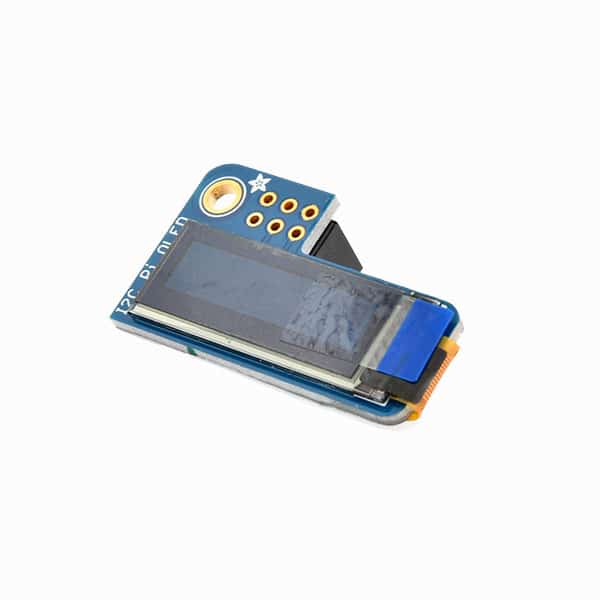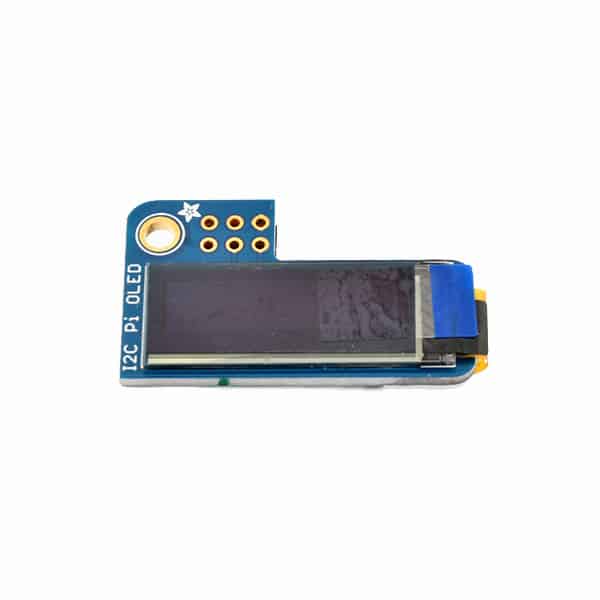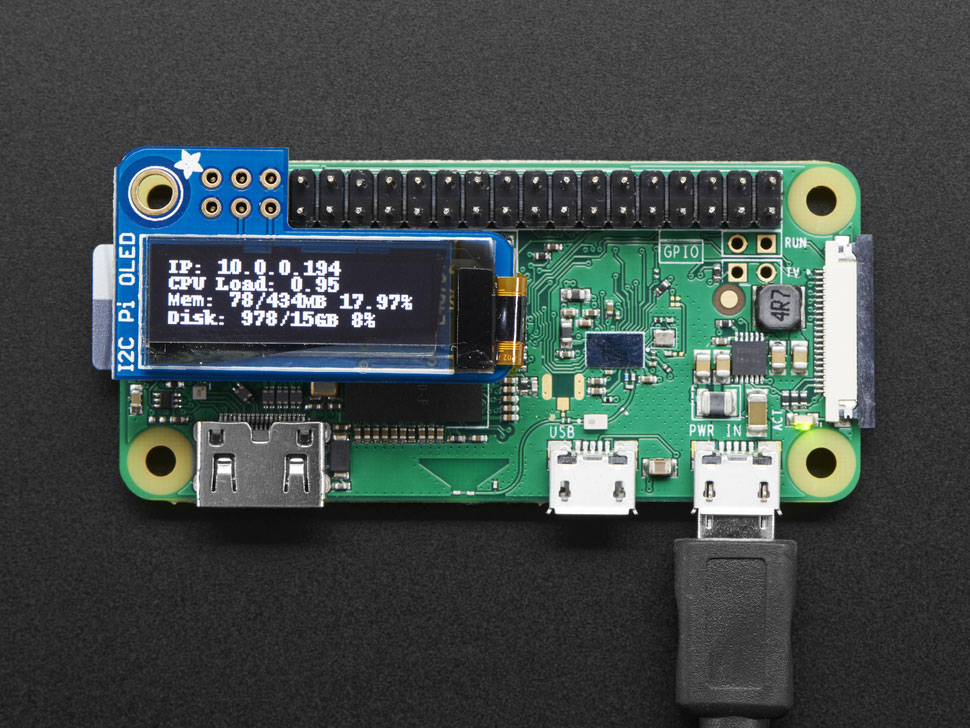
5197+ reviews
Order by 16:00 for same day shipping
14 days return
DE
EN
Individual
Business
Adafruit PiOLED - 128x32 Monochrome OLED Add-on for Raspberry Pi

Description Adafruit PiOLED - 128x32 Monochrome OLED Add-on for Raspberry Pi
This is the 128x32 PiOLED from Adafruit. It is a small OLED display that fits all Raspberry Pi computers. The PiOLED comes with a monochrome 128x32 OLED, with sharp white pixels. The OLED only uses the I2C pins. This leaves a lot of GPIO pins available for buttons, LEDs, sensors etc.
These displays are small, only 1 inch diagonal. Thanks to the high contrast of the OLED it is still easy to read. The screen consists of 128x32 individual white OLED pixels. Because the display makes its own light, no backlight is needed. This reduces the power required to use the screen.
The display is easy to use. Adafruit provides a Python library for the SSD1306 chipset. With the sample code you can display images, text and whatever you want. The display can handle a refresh rate of 30FPS. So you can also display animations or a simple video.
The module comes fully assembled and tested, so all you need to do is plug it in and install the Python code.
Please note that OLEDs can dim a bit with (very) long-term use. If you want to keep the screen bright, it is best to turn off the display (the pixels) when you do not need them .
Adafruit PiOLED - 128x32 Monochrome OLED Add-on for Raspberry Pi
Sold out
€19.62
Order before 4:00 PM = shipped today
14 days free returns
SKU: ADA2008 Categories: Raspberry Pi Displays , LED & Display , Adafruit
Description Adafruit PiOLED - 128x32 Monochrome OLED Add-on for Raspberry Pi
This is the 128x32 PiOLED from Adafruit. It is a small OLED display that fits all Raspberry Pi computers. The PiOLED comes with a monochrome 128x32 OLED, with sharp white pixels. The OLED only uses the I2C pins. This leaves a lot of GPIO pins available for buttons, LEDs, sensors etc.
These displays are small, only 1 inch diagonal. Thanks to the high contrast of the OLED it is still easy to read. The screen consists of 128x32 individual white OLED pixels. Because the display makes its own light, no backlight is needed. This reduces the power required to use the screen.
The display is easy to use. Adafruit provides a Python library for the SSD1306 chipset. With the sample code you can display images, text and whatever you want. The display can handle a refresh rate of 30FPS. So you can also display animations or a simple video.
The module comes fully assembled and tested, so all you need to do is plug it in and install the Python code.
Please note that OLEDs can dim a bit with (very) long-term use. If you want to keep the screen bright, it is best to turn off the display (the pixels) when you do not need them .



